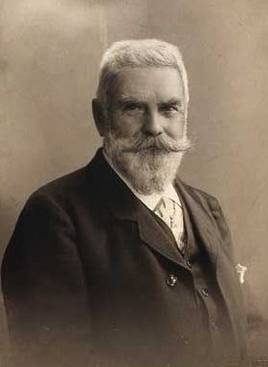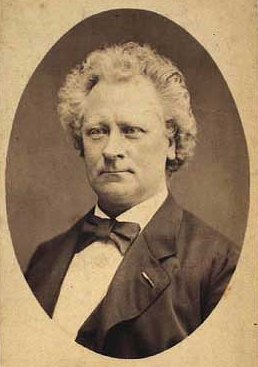1879.03.31 English
C O P E N H A G E N MARCH 31 1879.
TO MR B E R N H A R D OLSEN, DIRECTOR[1]
I AM VERY MUCH TEMPTED TO ACCEPT THE PROPOSAL IN YOUR KIND LETTER OF MARCH 5. ; -HOWEVER, OUR NEEDLEWORK TEACHERS ARE OF THE OPINION THAT IT WOULD BE IMPOSSIBLE TO FIND ENOUGH TIME FOR ADDITIONAL NEEDLECRAFT WORK OVER AND ABOVE THOSE OF THE UTMOST NECESSITY. I HAVE SENT YOUR LETTER TO PRINCIPAL PROFESSOR KELLER[2], THE GENERAL MANAGER OF THE HOME FOR DEAF-MUTE GIRLS; I DO HOPE THAT THEY WILL WELCOME THE REQUEST.
[1] JMC:This is a writing ball letter to Bernhard Olsen (1836 – 1922), Danish museologist; founder of ‘Dansk Folkemuseum’ Danish Folk Museum and of ‘Frilandsmuseet’ Danish Open Air Museum, both of which he led, in 1885-1920 and 1901-1920, respectively. Olsen trained as a graphic designer and a wood carver; for many years he worked for the monthly periodical ‘Illustreret Tidende’. His keen interest in historical costumes led him into a career as costumier at the Royal Danish Theatre. From 1868 until 1885 he was artistic director of Tivoli. In connection with the Exposition of Applied Art in Copenhagen in 1879 he offered to collect, organize and exhibit a unit for the rural population, and thereby he created the basis for his museum, ‘Dansk Folkemuseum’. With his exhibition designed as interiors he created a new museum display. We have not found Olsen’s letter to RMH, but it appears likely that it contained a request or invitation to the Royal Institute for the Deaf-Mute to contribute with handicraft works to the said Exhibition of Applied Art in 1879.
[2] JMC: Johan Keller (1830-1884), founder of the so called ‘Keller Institutions’ which enrolled students characterized at the time as ‘imbecile’ as well as the ‘proper deaf and dumb’. At times Keller and RMH enjoyed good cooperation, but conflicts did occur from time to time. They were in a kind of competitive situation in relation to the pupils (the deaf-mute), because the Keller Institutions wanted to enroll as many pupils as possible, since this resulted in increased state subsidies. For additional information about Keller, as well as photos, in the footnotes to the letter 18790512 from RMH to Keller.



